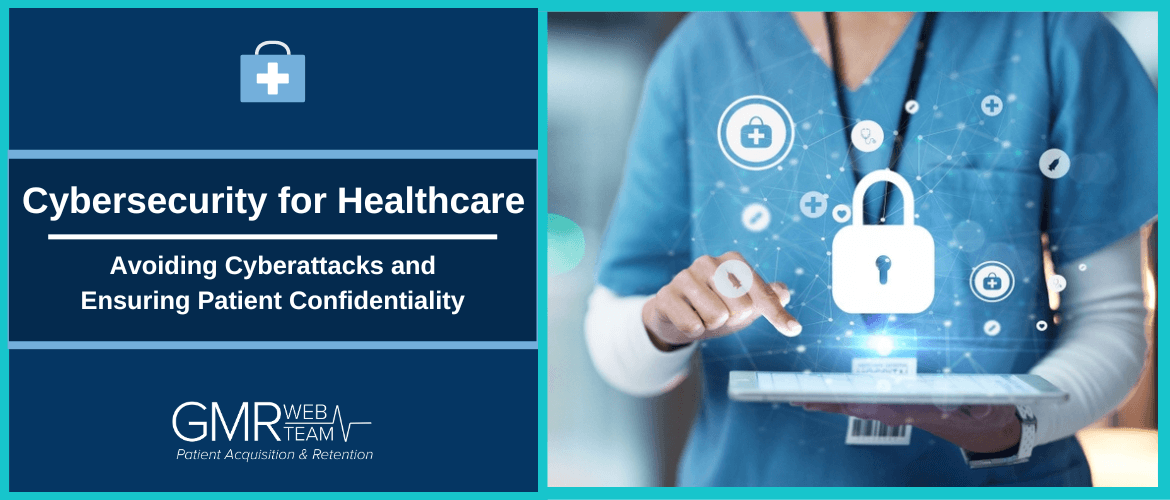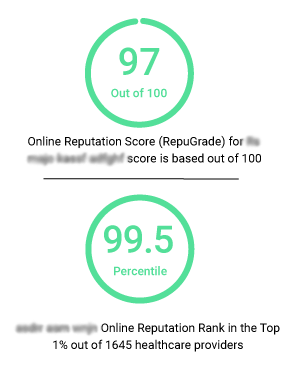Cybersecurity for Healthcare: Avoiding Cyberattacks and Ensuring Patient Confidentiality

The healthcare industry has become a prime target for cyberattacks, with alarming statistics revealing its vulnerability. In 2022 alone, the global healthcare sector witnessed a whopping 1,463 attacks per week, representing a 74% increase compared to the previous year. The statistics also show that healthcare was in the top 3 most attacked industries in 2022. These alarming numbers emphasize prioritizing cyber security in the 98healthcare industry and safeguarding patient confidentiality.
Keep in mind that failing to protect sensitive patient data can cause severe damage to your organization. Not only will it lead to reputational and financial loss, but it can also result in legal issues if you must comply with strict regulations like GDPR and HIPAA.
So, don’t take cybersecurity for healthcare lightly. Read on, as we share the best practices to minimize the risk of cyberattacks and protect sensitive information of your patients.
Common Cyber Threats Faced by Healthcare Industry
Before getting into the details of best practices to ensure cybersecurity for the healthcare industry, let's discuss the most common cyber threats the healthcare industry faces.
#1 Data Breaches
There are significant challenges for cybersecurity in healthcare due to a high number of data breaches. These breaches involve unauthorized access, use, or disclosure of patient information, necessitating robust measures to protect sensitive data.
The most common causes of breach incidents include:
- Insider actions (unintentional or intentional).
- Credential-stealing malware.
- Losing devices such as laptops.
One of the most famous examples of data breaches occurred in 2018 at the MD Anderson Cancer Center of the University of Texas.
The incident involved the theft of a laptop containing 33,500 patient records, violating HIPAA regulations. As a result, the MD Anderson Cancer Center received a penalty of $4.3 million.
#2 Ransomware
Ransomware is arguably the deadliest type of cyberattack. It's a malicious software program that encrypts or threatens to delete data unless a ransom is paid to the attackers. Healthcare organizations are particularly vulnerable to this attack as they deal with critical health records that must be protected. These attacks usually occur through phishing emails, malicious attachments, links, or fake advertisements.
According to the State of Ransomware in Healthcare 2022 report, 66% of healthcare businesses worldwide experienced ransomware attacks in 2021. Falling victim to such an attack can cause disruptions in patient care, and you'll need to pay a large sum of money to regain access to your data and network functionality.
#3 Phishing
Phishing is another dangerous attack vector, as it capitalizes on human organizational vulnerabilities. Cybercriminals use emails/messages and wait for unsuspecting individuals to click on malicious links or attachments.
It allows them to gain access to organizational data that they can steal or damage. An example of phishing in the healthcare industry involves a fraudulent order of prescription medications. A medical center received a call from a pharmacy confirming a large order (over $500,000 in value) in 2015. But upon investigation, it was discovered to be fraudulent.
#4 DDoS (Distributed Denial of Service)
DDoS attacks aim to disrupt access to websites/online software solutions by overwhelming traffic from different sources. This attack can severely impact healthcare providers relying on the Internet to exchange data and communicate with patients.
For instance, the Anonymous group launched a DDoS attack on a hospital in Boston in response to a controversial patient treatment decision. It resulted in network downtime and financial losses.
Important Note: It's important to note that Hackers have also adopted a ransom model for DDoS attacks, which means they demand payment to stop.
#5 Insider Threats
Insider threats pose a unique challenge as they originate within an organization. These threats involve individuals with authorized access credentials who misuse their privileges to carry out cyberattacks or data breaches.
Insiders may accidentally fall victim to phishing or other external threats, leading to compromises in network security. They may also intentionally abuse their access for personal gain.
A famous real-life example of an insider threat occurred at Bupa in 2017 when an employee copied and deleted data of about 547,000 customers from the organization's CRM. After that, they attempted to sell the copied data on the dark web.
Ensuring Cybersecurity in Healthcare Industry and Safeguarding Patient Confidentiality
Here's a list of the best practices to improve your healthcare organization's security posture and ensure patient data confidentiality.
#1 Educate Your Staff
One of the most essential steps in improving the security posture of your healthcare organization is to educate your staff. It would help if you made them understand the importance of data security and patient confidentiality.
Recent statistics show that around 82% of data breaches occur because of human error. You can provide your employees with security awareness training to help them exercise caution when handling sensitive information. Here are some essential tips that will help you train your staff.
- Familiarize your employees with the specific requirements outlined in the regulation that you need to comply with, such as HIPAA Privacy and Security Rules.
- Highlight the potential consequences of non-compliance, including legal penalties and reputational damage.
- Educate staff on adequately handling and protecting ePHI (Electronic Personal Health Information).
- Provide regular training sessions to educate employees about emerging cybersecurity for healthcare industry threats targeting the healthcare industry, such as phishing attacks, ransomware, insider threats, and DDoS attacks.
- Foster a culture of compliance and create a sense of responsibility among employees regarding patient confidentiality.
#2 Implement a Strong Password Policy
Weak passwords are a leading cause of data breaches, accounting for 81% of such incidents. That's why you must have a strict policy so all your staff members use strong passwords. It'll help you prevent your website/online solution from getting hacked and minimize the risk of data breaches.
Consider using the following recommendations to create strong passwords.
-
Create Complex Passwords
Encourage employees to use complex and lengthy passwords. They should contain a combination of lowercase and uppercase letters, special characters, and numbers. This makes passwords harder to guess or crack.
-
Avoid Common Passwords
Instruct staff to avoid using common passwords such as "123456" or "password." Hackers often use password dictionaries and automated tools to guess or crack weak passwords, so choosing unique and uncommon combinations is essential.
-
Update Passwords Regularly
Encourage employees to change their passwords regularly, typically every 60 to 90 days. It reduces the risk of password compromise and unauthorized access over an extended period.
-
Use MFA (Multi-Factor Authentication)
Implementing MFA adds an extra layer of security and can prevent 80-90% of cyberattacks. It requires users to provide an additional verification factor, such as a unique code sent to their mobile device and their password.
-
Avoid Password Reuse
Emphasize the importance of not reusing passwords across multiple accounts. If one account is compromised, reusing the same password increases the risk of unauthorized access to other accounts.
-
Password Length
Encourage employees to choose passwords that meet or exceed the minimum required length, typically 12-16 characters. They'll provide greater security against brute-force attacks.
-
Password Encryption
Ensure that all stored passwords are encrypted to protect them from unauthorized access, even if the system is compromised.
#3 Follow the Principle of Least Privilege
The Principle of Least Privilege is a cybersecurity for healthcare technique that restricts user access rights to only what is necessary to perform their job responsibilities. In other words, employees should have the minimum access required to carry out their tasks effectively.
It reduces the risk of unauthorized access and potential data breaches. Here are some tried and true tips to follow.
-
Access Control
Assign user privileges based on job roles and responsibilities. Only provide employees access to the systems, applications, and data necessary to perform their duties.
-
Regular Access Reviews
Conduct periodic reviews of user access rights to ensure they align with current job roles and responsibilities. Remove any unnecessary or outdated privileges to maintain a minimal access approach.
-
Segmentation and Isolation
Separate sensitive systems and data from less critical assets through network segmentation. It reduces the potential impact of a security breach by limiting lateral movement within the network.
-
Monitoring and Logging
Implement robust monitoring and logging mechanisms to track user activities and detect unauthorized access attempts or suspicious behavior. Promptly investigate and respond to any identified anomalies.
#4 Maintain a Layered Defense System
You must have a layered defense system to protect your healthcare organization from cyber threats. This approach involves implementing multiple security measures to protect against potential attacks.
-
Implement a Firewall
A firewall acts as a protective barrier between the Internet and your network. It monitors outgoing and incoming traffic and applies predefined security rules to block unauthorized access and malicious activities.
-
Use a VPN (Virtual Private Network)
A VPN creates an encrypted connection over the Internet to ensure the information transmitted online remains confidential and secure. It enables secure access to patient records and other critical resources while preventing unauthorized interception.
So, ask all your employees, especially the ones working remotely, to use a VPN for smartphones and other devices to access your company network.
-
Utilize Antivirus Solutions
Deploy robust antivirus software across all devices and systems within your healthcare organization. Antivirus solutions scan for and detect different types of malware, including viruses, worms, and ransomware.
-
Regularly Patch and Update Systems
Software vendors frequently release patches to address identified vulnerabilities and strengthen system security. So, you should keep all software, operating systems, and applications updated with the latest security patches and updates.
#5 Use Secure Third-Party Software and Services
Third-party software solutions and services offer many benefits for healthcare organizations but can also introduce security risks. Data breaches often result from vulnerabilities in third-party software or services, highlighting the importance of managing third-party risks.
Therefore, you should be extra careful while choosing a third-party healthcare software solution or service to ensure you opt for a secure and reliable service provider. Here are some tips that will help you in this regard.
-
Risk Assessments
Conduct thorough risk assessments of third-party vendors to identify potential vulnerabilities associated with their services.
-
Security Ratings
Utilize security rating services that evaluate and rate third-party vendors based on their security practices.
-
Vendor Tiering
Categorize vendors based on their risk levels and the criticality of their services. Establish different tiers and apply appropriate security requirements based on the data sensitivity and systems involved.
#6 Encrypt All Sensitive Data
One of the best ways to protect sensitive data, whether at rest or in transit, is to encrypt it. Encryption involves converting readable data into unreadable ciphertext, which can only be decoded and read by individuals with a private key.
It'll help protect it from unauthorized access and comply with HIPAA requirements. Even if a cybercriminal obtains someone's credentials, they won't be able to decipher the encrypted data without the private key.
In the example of the MD Anderson Cancer Center, discussed above, the center could have avoided the penalty if the data in the stolen laptop had been encrypted.
#7 Backup Data Regularly
Implementing effective data backup and recovery systems is crucial for healthcare providers. It protects sensitive patient information and keeps it available to you, even in a cyberattack or system failure.
Here are some key points to keep in mind while implementing a data backup system:
-
Data Backup Frequency
Backup data periodically to keep the most up-to-date version available in case of system failure or disaster.
-
For Critical Data: Perform daily backups to minimize potential loss.
-
For Critical Data: Weekly backups should be enough to balance data protection and resource utilization.
-
For Critical Data: Monthly backups could be sufficient.
-
-
Data Backup Locations
Store multiple copies of backups in secure online and offline locations to protect against widespread disasters and ensure data accessibility.
-
Data Recovery Processes
Establish well-defined procedures for retrieving data during an incident or malfunction. It can involve restoring data from secure offsite backups and verifying its integrity before resuming use.
#8 Have an Incident Response Plan in Place
An Incident Response Plan outlines the step-by-step procedures to follow when a security breach or any other cyberattack occurs. It allows you to respond quickly to contain the attack and minimize its impact on patient data and business operations.
The following are the key elements that an effective incident response plan should have.
-
Defined Roles and Responsibilities
Designate specific individuals or teams responsible for detecting, reporting, and responding to security incidents.
-
Incident Identification and Assessment
Establish mechanisms to identify and assess security incidents quickly, such as monitoring systems, intrusion detection systems, and employee reporting channels.
-
Incident Containment and Mitigation
Implement strategies to minimize the incident's impact. For example, isolating affected systems, limiting access, and implementing temporary measures to prevent further compromise.
-
Communication and Reporting
Define a communication plan to notify relevant stakeholders, including internal teams, management, legal counsel, and regulatory authorities. Report the incident as soon as possible, as it helps manage it effectively and maintain transparency.
-
Forensic Investigation
Include procedures for conducting forensic analysis to determine the incident's cause, extent, and impact. Preserve evidence for potential legal and regulatory purposes.
-
Recovery and Restoration
Outline steps for recovering affected systems, restoring data from backups, and implementing security measures to prevent similar incidents in the future.
-
Continuous Improvement
Regularly review and update the incident response plan based on lessons learned from past incidents and emerging threats. It'll allow you to maintain the relevancy and effectiveness of the plan.
#9 Evaluate Your Compliance Periodically
Evaluating your compliance improves your organization's security posture and can help you prevent legal issues. Here's how you can achieve that.
-
Stay Updated with Regulations
Stay informed about the latest regulatory requirements, such as HIPAA, GDPR, or other regional regulations, that apply to your organization. Regularly review any updates or changes to ensure your compliance efforts remain relevant.
-
Conduct Internal Audits
Perform regular internal audits to assess your organization's compliance status. They can help you identify areas of non-compliance, potential risks, and gaps in processes or documentation.
-
Engage External Consultants
Consider involving external auditors/consultants to assess your compliance practices independently. Their expertise can provide valuable insights to find any blind spots or areas for improvement that you might have missed.
-
Document Compliance Efforts
Maintain accurate records of compliance activities, including audits, training sessions, and corrective actions. It'll demonstrate your commitment to compliance and can be helpful during external audits or regulatory inspections.
-
Address Non-Compliance Promptly
If any areas of non-compliance are identified, take immediate corrective actions to rectify the issues. Develop and implement a plan to address non-compliance, document the steps taken, and monitor their effectiveness.
Final Words
The healthcare industry is facing increasing cyberattacks that can disrupt your patient care system. However, you can always counter these attacks and threats by staying informed and proactive.
We hope that the best practices discussed in this guide have helped you understand how to enhance cybersecurity for healthcare. Following these guidelines will help you improve your healthcare organization's security posture and ensure the confidentiality of patient data.
Comments are closed


